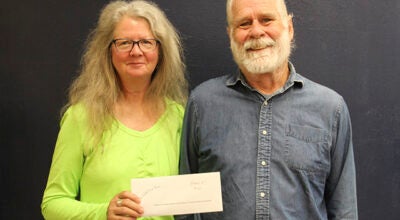With COVID still lurking, other illnesses add to parent woes
Published 11:25 am Saturday, October 16, 2021
|
Getting your Trinity Audio player ready...
|
ST. PAUL — It’s a busy morning in Mai Huynh and Christopher Birkholm’s Minneapolis home as they get their 18-month-old, Franny, and 3-year-old, Clinton, out the door.
“Both kids headed back to day care last week,” said Huyhn.
But it’s a precarious situation.
Since August, both Franny and Clinton have had to stay home about six times between the two of them with illnesses that mimic COVID-19. Pointing to Clinton and Franny, Birkholm explained that sometimes it’s a double, triple — even quadruple — whammy.
“He had RSV, but she had RSV, parainfluenza and rhinovirus — all at the same time,” said Birkholm.
And each time their kids get sick, Huynh said she and Birkholm have to scramble for COVID tests and child care, and figure out how to manage work at the same time, Minnesota Public Radio News reported.
“When the kids are sick, it’s just these conversations that we have have turned into negotiations over who has to take care of the kids,” said Huyhn, who works at an elementary school and has limited flexibility to stay home.
In a season when the sniffles can’t be ignored, the ensuing confusion can leave parents in a bind juggling some challenging logistics: Do they send their kids to school while sick even if they test negative for COVID-19? Who will take time off from work to watch the kids? And will yet another hour of TV to entertain them really ruin them for life?
A fourth wave of COVID-19 is colliding with an early start to RSV season, as well as other respiratory viruses that typically crop up this time of year, said Mayo Clinic pediatrician Dr. Angela Mattke.
It’s a pattern that may hold for months and that could further strain an already strapped health care system, she said.
“It’s going to make it extremely difficult in these winter months if we’re seeing COVID-19 peaks, if we’re seeing influenza, we’re seeing other circulating viruses like RSV, coronavirus,” Mattke said. “We’re going to see a large influx of sick kids to doctor’s office emergency room visits to hospitals.”
The state Health Department says it’s seeing 3,000 new COVID-19 cases a week in children under 12 — a high-water mark for the pandemic. And many hospitals are at capacity, including pediatric centers in part because of an unusual rise in other respiratory illnesses in kids.
Many kids, including Franny and Clinton Birkholm, weren’t in school or a day care setting until August of this year.
Mattke said because kids were isolated and masked for so long, they’re now getting exposed to viruses they probably would have encountered earlier — and it’s happening all at once.
During the pandemic, there was an almost complete reduction in viruses like RSV, Mattke said.
“Now we’ve seen relaxed social distancing measures, relaxation on masking, and so the viruses just are primed to spread because we have a lot of people that maybe have never been exposed to especially RSV virus,” she said. “And a lot of kids who haven’t been exposed to other viruses, and so that’s why we’re seeing such a large increase in the number of circulating respiratory viruses.”
In St. Cloud, nurse Breanna Olsen is in the midst of another round of child care struggles. Her youngest’s day care has been closed again after a case of COVID cropped up among students.
She doesn’t know how much longer her son will be home, as more kids from the same day care test positive.
For now, she and her husband, who is a teacher, are cobbling together care, calling on grandparents and taking time off, too. But it’s hard because both work in professions that can’t be done from home — and both industries are suffering staff shortages.
“My husband gets a set number of days off a year, which can roll over, so he has more than you know that for the year,” Olsen said. “And for me, you can only call in so many shifts, and then you don’t get your raise next year. So we’re always like, ‘OK, whose turn is it?’ ”
In Huynh and Birkholm’s house, Birkholm typically watches the kids because he already works remotely for an e-commerce company.
Birkholm said he loves having extra time with the kids.
“But eventually I have to do work and join meetings and it’s really hard to do when you got three days in a row of sick children at home,” he said.
Birkholm said that even finding a COVID test for his kids eats into his day. They have to call the doctor every time because their kids are too young to do saliva tests offered at community testing sites.
And then he has to take the kids to the doctor, wait for results — and even though COVID tests are free, those doctor’s visits often come with a charge.
While Birkholm has taken on much of the child care, Huynh said she feels stuck between two walls of what she describes as self-inflicted guilt: If she’s at work, she feels bad that she can’t take care of her sick kids. If she’s at home, she feels guilty because her school is already short-staffed.
“And so it’s just this constant feeling of letting people down,” she said.
Mattke said there’s no silver bullet for protecting kids this fall from COVID-19 and other illnesses. It will be months before COVID-19 vaccines are available to all kids under 12.
Testing kids for any symptoms — even if it’s just congestion — helps catch COVID cases early, and will go a long way in protecting others from catching the virus.
And Mattke says the single best way to protect kids from illness this fall is for anyone who is eligible to get a flu shot and COVID-19 shots.
Both, she said, offer powerful protection against illness.




